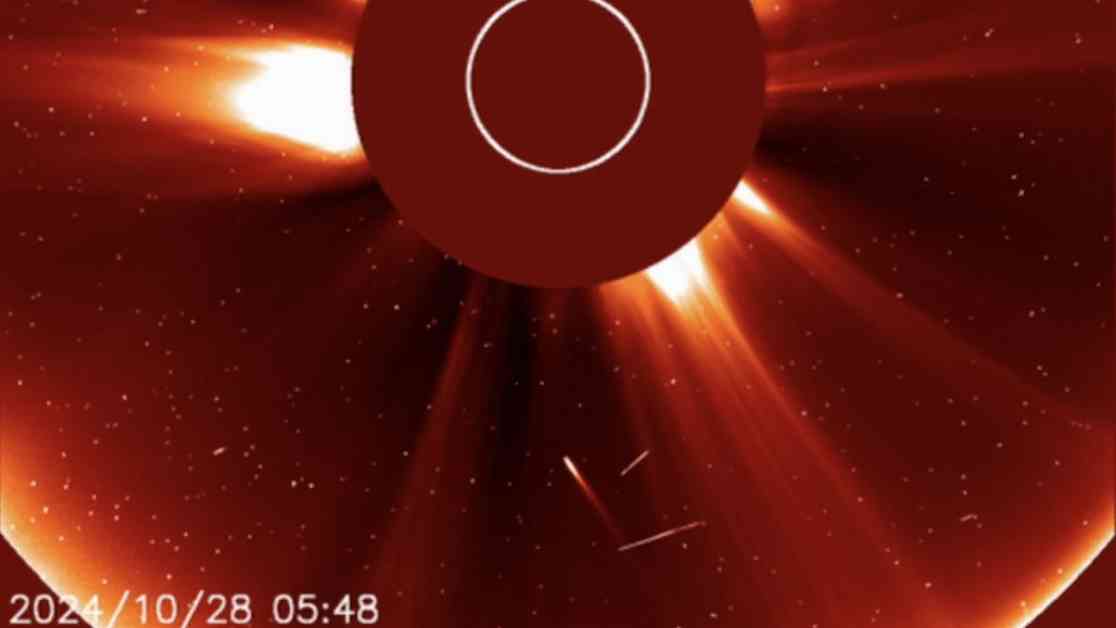Comet C/2024 S1 (ATLAS) has met its demise as it evaporated while heading towards the sun on Monday. The comet, also known as the “Halloween Comet,” was initially hoped to be visible to the naked eye but began disintegrating earlier this month. Thanks to the Solar and Heliospheric Observatory (SOHO), operated by NASA and the European Space Agency, we now have footage of the comet’s final moments.
The comet passed its closest point to Earth on Oct. 23, reaching a magnitude of 8.7, too dim to be seen without a telescope. After this, it started its journey towards the sun, making it challenging to observe without specialized solar instruments. Comet ATLAS was first discovered in September by the ATLAS project in Hawaii and belongs to the Kreutz sungrazers family, comets that come close to the sun every 500 to 800 years.
Comets like C/2024 S1 (ATLAS) are composed of gases, rocks, and dust from the early days of the solar system. Some comets have long orbits lasting hundreds of thousands or millions of years, while others, like Halley’s Comet, orbit the sun every 75 years. Another recent comet, C/2023 A3 (Tsuchinshan-ATLAS), survived its closest approach to the sun and was visible to the naked eye for most of October.
This event provides valuable insights into the behavior of comets and their interactions with the sun. Understanding these celestial bodies can help scientists learn more about the formation of our solar system and the potential threats they may pose to Earth in the future. The footage captured by SOHO will be analyzed in detail by astronomers to uncover more information about the composition and behavior of comets like C/2024 S1 (ATLAS).
As we continue to explore the mysteries of the universe, events like the disintegration of Comet ATLAS remind us of the dynamic and ever-changing nature of space. The research conducted on comets not only expands our knowledge of the cosmos but also inspires curiosity and wonder about the vastness of the universe. Stay tuned for more updates on astronomical discoveries and events as we delve deeper into the mysteries of outer space.










